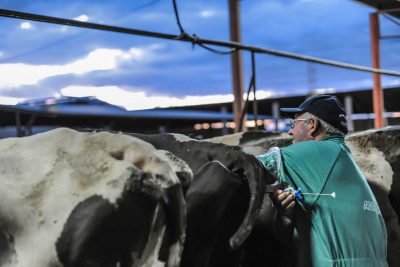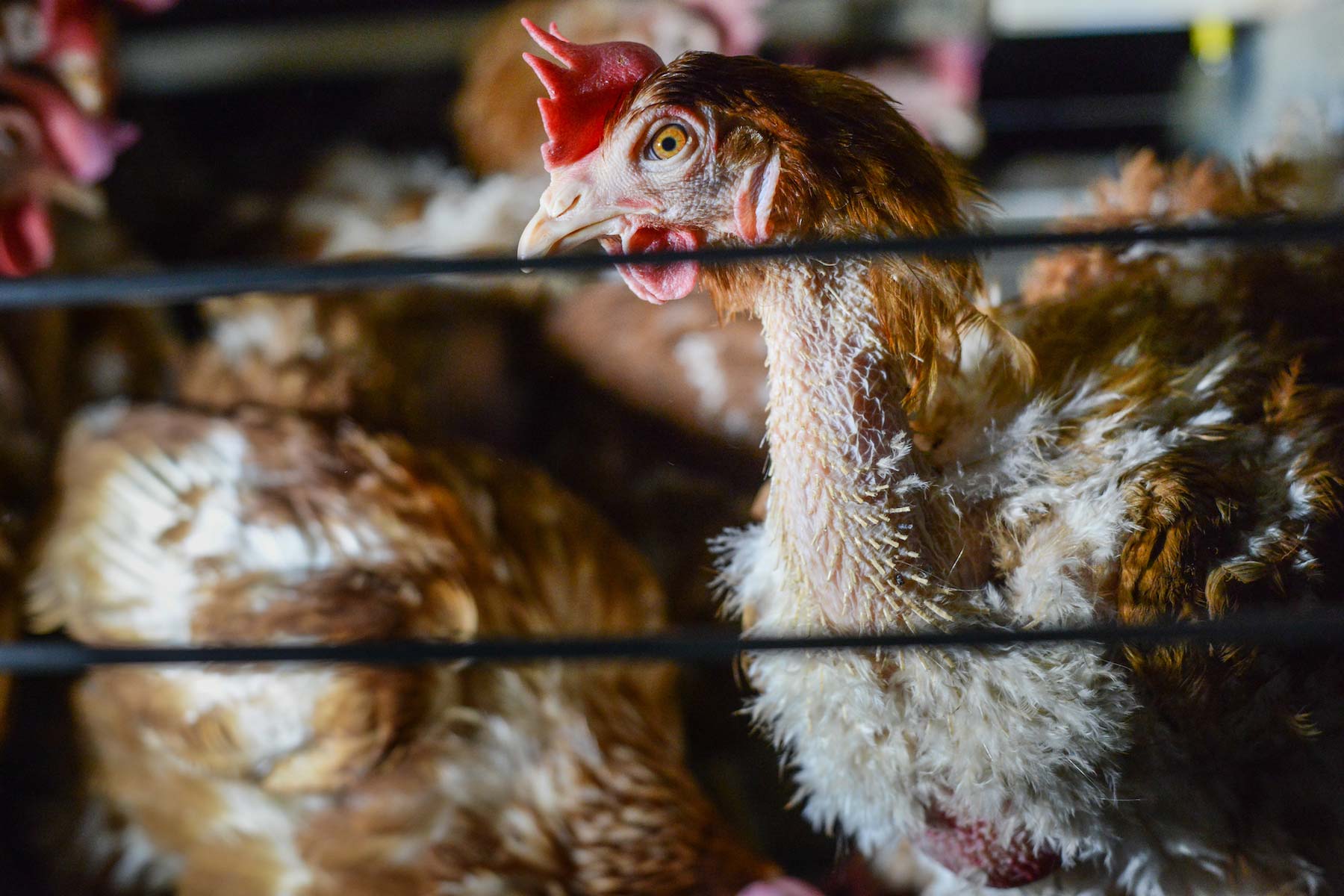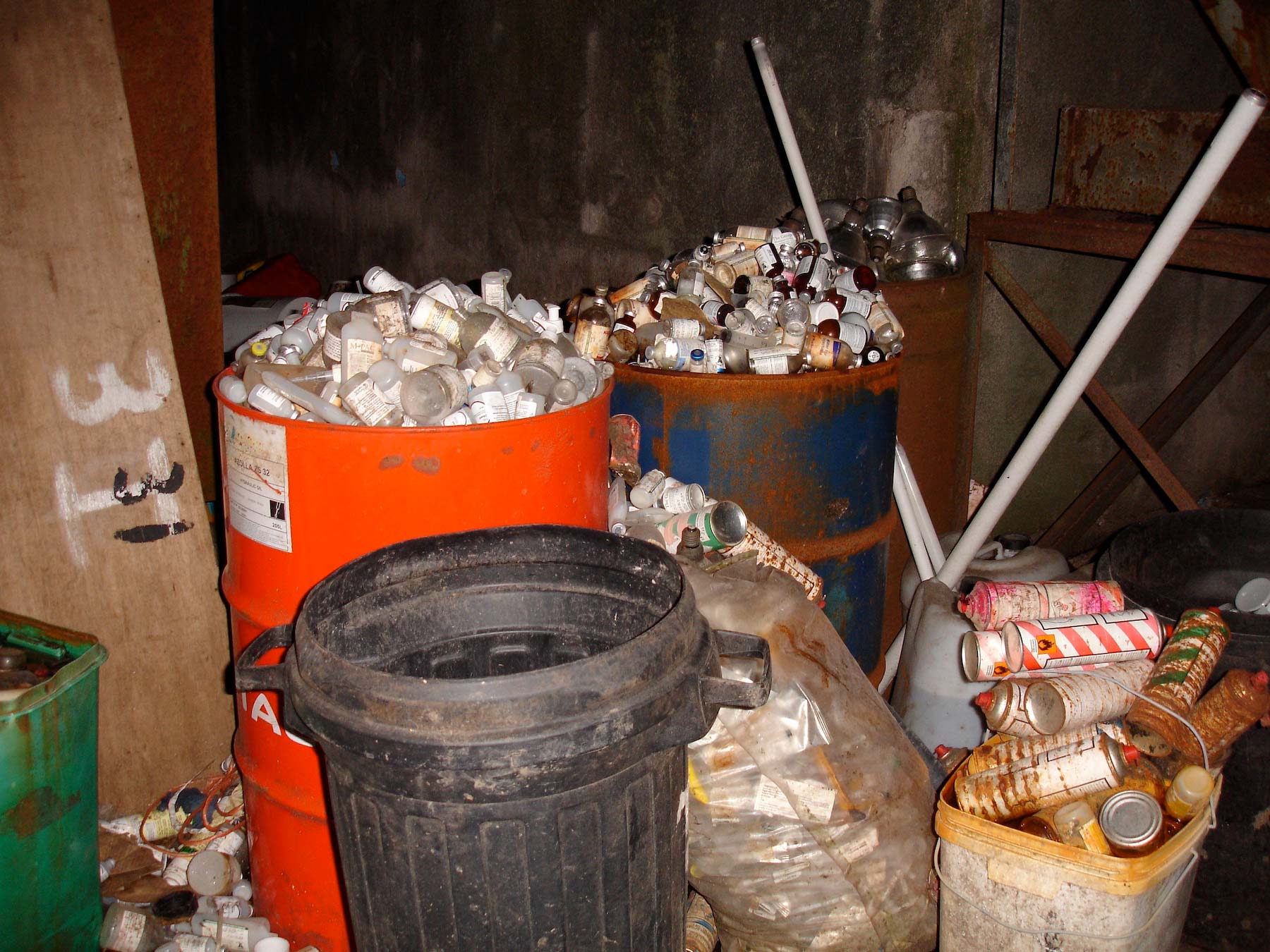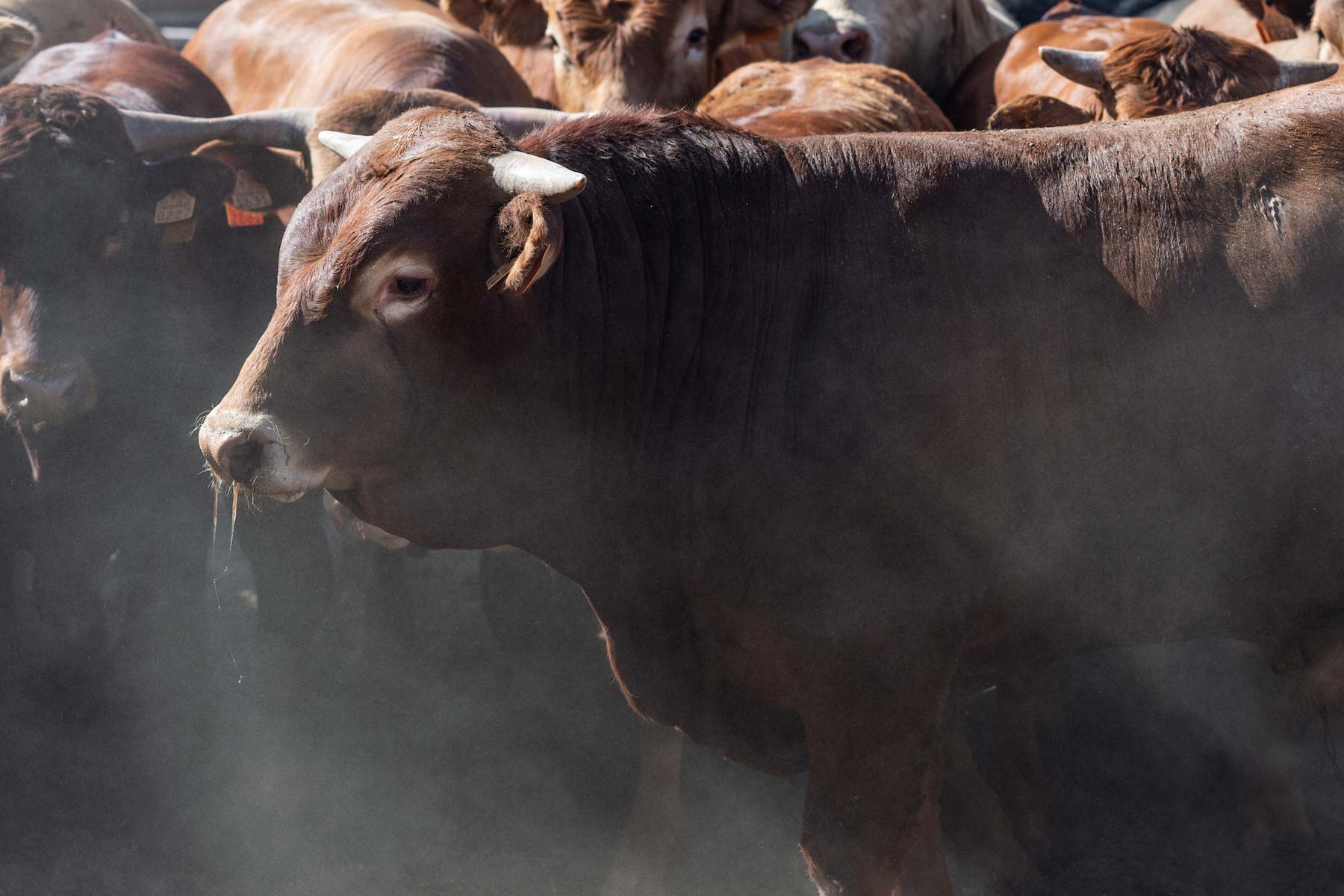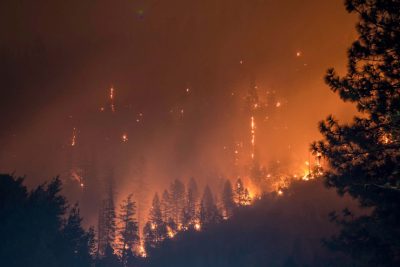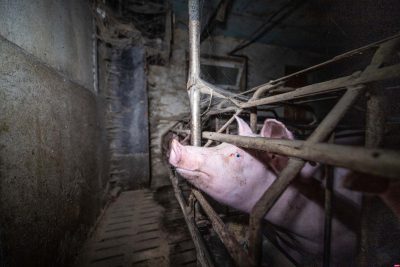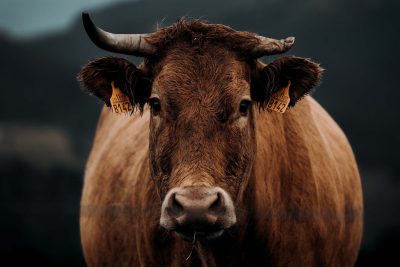The global meat industry is worth more than one trillion dollars, its vast profits being accrued at the expense of both farmed and wild animals, our planet and the health of millions of people. Read on to find out why we encourage and support anyone wishing to stop funding this industry in favor of businesses that prioritize compassion, health and justice.
Meat Sources
Meat is the flesh of animals, whether that is their skin and muscles, their internal organs or other body parts. If we eat processed meats, there is no knowing what body parts we may be consuming.
Poultry is the most commonly consumed meat in the US, with 48.8kg consumed per year per person. Beef and veal (meat from baby cows) are the next most consumed, then pork, then fish, then lamb.
How Big Is The Meat Industry?
It’s huge, and that makes it incredibly powerful. The entire industry is worth more than $100bn in the US alone. It comprises farmers, traders, hauliers, slaughterers, butchers, and processors. Plus there are additional industries that support it, including: those that supply the instruments to brand skin, clip teeth, cut off tails and castrate male animals; those that supply the feed (much of it grown on deforested land); those that make and sell the cages, crates, chains, hutches, electric goads and captive bolt guns that incarcerate and inflict deliberate pain; and those that make and sell the vaccinations, antibiotics and other drugs used routinely to keep those poor animals alive.
In parallel, another raft of industries has emerged whose job it is to try and mitigate some of the most devastating impacts of the meat trade, and to keep us safe from it. These include: the scientists and medics tackling the serious diseases caused by people eating meat; the global health experts and medical researchers trying to combat antibiotic resistance and zoonotic pandemics; the environmental scientists working to gather data and disseminate information about the industry’s effect on climate breakdown, pollution and biodiversity loss; and all the charities and nonprofits trying to put right some of the many serious wrongs caused by this one reckless industry.
Is The Meat Industry Growing?
Sadly, it is. While many people are coming to understand just how damaging this industry is, the amount of meat eaten continues to rise.
In fact, the poultry industry is one of the fastest growing industries in the US, as people switch from beef to chicken over health concerns (red meat is ‘probably carcinogenic’ to humans) and the undeniable environmental impact of red meat. Yet, despite this, the United States remains the largest producer of cows in the world.
Why The Meat Industry Is Bad
The meat industry has many serious consequences for the planet, for wild species, for farmed animals and for people.
Meat Industry Environmental Facts
Over the past 25 years, scientific evidence has been amassing that shows just how bad the meat industry is for our planet – for the air, earth, water, wild places, wild animals, and our climate.
Deforestation Due To Pasture
Farming animals uses a lot more land than farming plants. In fact, 83 percent of all farmland is used to raise animals but it gives us just 18 percent of our calories. And the more meat people eat, the more land must be found. And so we take it from nature, from woodlands, wild meadows and forests, and we drive out the myriad species – including indigenous people – whose home it was. Perhaps most worrying is the decimation of pristine rainforests. In the Brazilian Amazon, about 65 percent of deforestation can be linked to cattle ranching.
Climate Change Impact
The meat industry is one of the most damaging industries in terms of its climate impact. It is responsible for 14.5 percent of all human-generated greenhouse gas emissions, which is more than the fuel from every car, truck, plane, bus, ship and train on the planet. Oxford University researcher Joseph Poore found that almost every animal food creates more emissions than almost every plant food. For example, beef, lamb, mutton, prawns, pig meat, poultry meat and eggs drive climate breakdown more than rice, tomatoes, and soy. And we should choose soy milk, as soy is much better for the planet than dairy.
Excessive Use Of Water
It takes a lot more water to create animal products than it does to grow and process plant products. An influential study in 2010 estimated that while vegetables had a footprint of about 322 liters per kg, and fruits used 962 liters per kg, meat needed many times more. For chicken, it is 4,325l/kg, for pork it is 5,988l/kg, for sheep or goat meat 8,763l/kg is required, while for beef the figure is vast – 15,415l/kg.
Already, 70 percent of the world’s population experiences at least one month of water scarcity per year. As our freshwater aquifers dry up, and we face more droughts and usage constraints, is there any justification for wasting so much of this precious resource on products we don’t need?
Overuse Of Land
To grow all the crops needed to feed the billions of animals kept inside factory farms, more and more is demanded of the earth. To maximize production, it is doused in pesticides and fungicides that kill insects, including bees. But without insects, birds, mammals, amphibians and reptiles also suffer and die out. Add to this the mass destruction of habitat for grazing or to grow fodder, and we can see that wild animals really are in serious trouble.
And it’s not just land species that are struggling, our farming is killing aquatic species too. To keep boosting the earth’s productivity, fertilizer is applied so liberally that it runs off the land and into waterways. There, it causes algal blooms, which suck the oxygen out of the water, killing rivers, creating ocean dead zones and destroying aquatic life.
Shockingly, just in the last 50 years, humanity has wiped out 68 percent of global wild animal populations, and animal agriculture is a key cause.
Meat Industry Cruelty Facts
There is no doubt that life on a modern farm is short, miserable and often pain-filled.
Living In Packed Lots
One beef farmer writes of typical feedlot conditions: “Cattle feedlots have been compared to crowded medieval cities with open sewers and choking air – the difference being that feedlots have antibiotics to keep the occupants alive.”
Pigs, chickens, turkeys, ducks, geese and others are also predominantly kept inside intensive factory farms, where they never get to walk on the earth or breathe fresh air. For the billions of animals crammed in together, there is nothing at all that makes life worth living.
Forced To Reproduce
There is nothing natural about modern farming, not even reproduction. Cows, pigs, sheep, and turkeys are all commonly artificially inseminated to make sure they become pregnant on a day that ensures the optimal production of young for slaughter or milk for sale.
In cows, the process is done with one hand in the cow’s anus to manipulate her cervix while the other inserts a straw of semen into her vagina. Sheep have hormone sponges inserted into their vaginas, and are increasingly being inseminated surgically. Turkeys have been bred to have large breasts, which means they are unable to mate naturally. Turkey ‘milkers’ are employed to collect the semen from males which is then inserted into females. It is easy to injure the animals during this delicate procedure but there is no requirement for a veterinarian to be involved.
Aside from any suffering caused during insemination, and the biological toll of repeated pregnancies, animals naturally would choose their mate. On farms, reproduction is forced upon them.
Whole Life Of Confinement
The meat industry’s ethos is to cram animals in and sell them cheap, as though they were cans of beans, not sentient beings. And so billions of animals – especially pigs, calves and poultry – are confined inside cages or crates so small they can barely move, and they may endure this for most, if not all, of their lives. Many suffer open sores on their feet, shoulders and elsewhere from standing on wire or laying on concrete.
Release from this debilitating confinement comes only on the day they are sent to slaughter.
Living And Sleeping In Their Own Dung
In factory farms and feedlots, animals have no choice but to stand, lay and sleep in their own waste.
There is just so much of it, and the sheds and lots are not cleaned regularly, and not at all during the lifetime of birds. No animal wants to live this way.
Diseases And Brutality
When thousands of animals are crowded together inside filthy units, disease outbreaks are inevitable. To stem economic losses, farmed animals are routinely dosed with antibiotics and other drugs, just to try to keep them alive long enough to get them to the slaughterhouse. Even so, millions each year don’t make it and they die, uncared for, untreated and hidden from public view.
Under such an unforgiving system, it is not surprising that animals get brutalized by farm workers. Investigations in farms of all sizes, of all species, all around the world, show farm workers hitting, kicking, beating and otherwise abusing animals, often while taunting them.
As psychologist Dr Melanie Joy says: “Eating meat is a violent ideology. Meat cannot be procured without violence.” And we pay for this violent treatment whenever we buy a piece of meat.
Human Health Impact
You would hope that there would be a significant payoff for all this suffering and all this environmental destruction, and yet people also suffer when we farm and eat animals. It’s a system with no up-sides at all.
Due To Drugs Administration
Antibiotics crucial to human medicine are still being used in “unacceptable” quantities on US farms, despite rules to curb their use. When these vitally important drugs are overused, bacteria get used to them and find ways to beat them.
This is not a small-scale problem. Roughly 75 percent of the meat sold at U.S. grocery stores contains antibiotic-resistant bacteria, also known as superbugs. Drug-resistant bacteria already sicken 2.8 million Americans and kill around 35,000 each year. This will only worsen as we waste vital medicines inside factory farms.
Due To Diseases
We can also get sick when we handle or eat infected meat, milk or eggs, with symptoms ranging from the unpleasant to the grim, from diarrhea to death. The long-term effects of meat consumption are also deeply concerning. All processed meats cause cancer. All red meat ‘probably’ causes cancer. And the damage caused by animal products does not stop there …
Due To Consumption Of Fats
The consumption of saturated fats – the kind found in meat, dairy and other animal products (as well as many processed foods) – is having a profound impact on our health, wellbeing and the length of our lives. A diet rich in saturated fat can drive up total cholesterol and increase harmful LDL cholesterol, which may prompt blockages to form in arteries. According to the Physicians Committee for Responsible Medicine research has shown clear links between saturated fat and inflammation, oxidative stress, liver disease, type 2 diabetes, cognitive decline, Alzheimer’s disease, and dementia.
But eating a whole food plant-based diet can change everything! Vegans tend to suffer less from type 2 diabetes, some cancers, and cardiovascular disease. In fact, research shows that 10 servings of fruits and vegetables each day can reduce the risk of cardiovascular disease by 28 percent, and premature death by 31 percent.
Due To Processing Facilities
Inside slaughterhouses, living breathing animals are cut, bled and stripped of their skins. Their insides are scraped out, their heads removed, and they are systematically taken apart. During this process, any viruses or bacteria they have can easily be transferred to other carcasses or to workers. This is where food poisoning often begins, and – with slaughterhouse workers crammed in together – it is where pandemics, like Covid, can really take hold.
Largest Meat Producers Worldwide
In terms of the countries that produce the most meat, China comes top, followed by the European Union, the United States, Brazil and Russia.
As for companies, JBS, Tyson Foods, Cargill, Smithfield and BRF are the world’s five largest meat-producing corporations. In 2019, JBS reported a net revenue of $51.7 billion. Half the countries in the world have smaller GDPs.
Do We Have Alternatives?
We do not need meat to be healthy. Quite the opposite! Every nutrient we need is available on a plant-based diet, and we can live longer, healthier lives without meat and its risks. For those who like the taste of meat but don’t want any of the downsides, there are plenty of meat alternatives that look, cook and taste like meat but are, in fact, made of plants. There are burgers, steaks, hot dogs and tuna, ground beef, bacon, roasts and deli slices. All the taste and flavors we love are available to vegans, which means we don’t have to miss out on a single thing.
Conclusion
The meat industry is one of the most powerful on earth, and it uses that power to lobby governments, to heavily market products while obfuscating the dangers, and to silence those who seek to expose the many terrible abuses that take place.
This is an industry that keeps billions of sentient beings in appalling, indefensible conditions before dispassionately taking their lives. It’s an industry that pollutes and poisons waters, decimates forests and other wild spaces, and drives out or kills the animals who live there. It spreads deadly diseases, not just among animals but among people, too. And all the while, it seeks to introduce ag-gag laws while raking in the profits.
We do not need to accept this. There is a better, kinder, healthier way to feed ourselves, and each of us has the power to embrace it.
Sign up now to try vegan with us for 31 days.
